Can't find chili de árbol? Don't worry—here are the top 5 substitutes with exact heat levels, flavor profiles, and usage tips to replace it in any recipe. Whether you need fiery heat or smoky depth, we've got you covered.
Top 5 Substitutes for Chili de Árbol
- Cayenne Pepper
- Serrano Pepper
- Jalapeño Pepper (Dried)
- Guajillo Pepper
- Pasilla Pepper (in Some Cases)
Each substitute has unique heat and flavor characteristics. Let's dive into the details to find your perfect match.
Cayenne Pepper
With a Scoville rating of 30,000–50,000, cayenne delivers intense heat (slightly hotter than chili de árbol). It lacks the grassy citrus notes but works perfectly for pure spice. Add smoked paprika for depth in sauces or rubs.
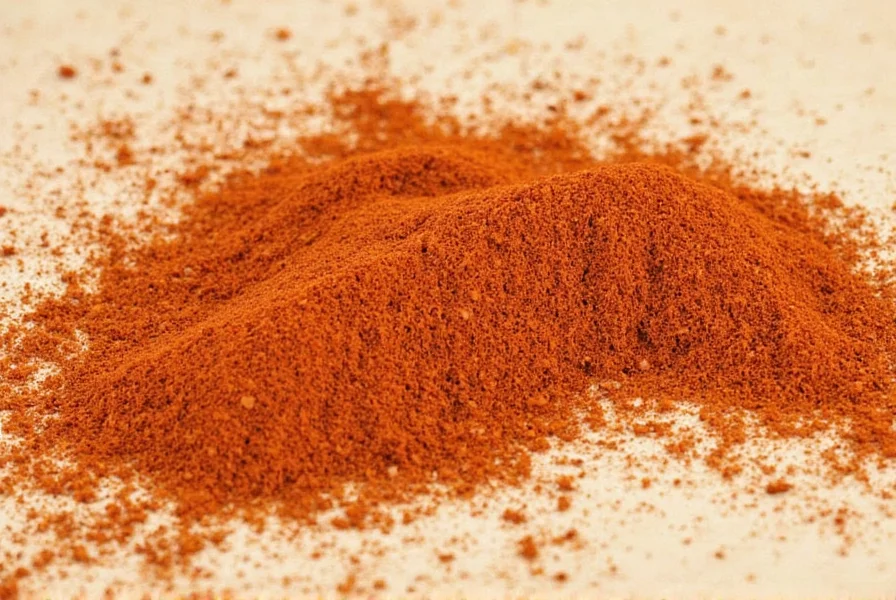
- Best for: Spicy sauces, marinades, hot powders
- Flavor profile: Sharp, peppery, bright
- Use sparingly: Cayenne can quickly overpower a dish
Serrano Pepper
At 10,000–23,000 Scoville, serranos offer similar heat to chili de árbol with a fresh, grassy tang. Ideal for salsas and tacos. Roast them for deeper flavor.
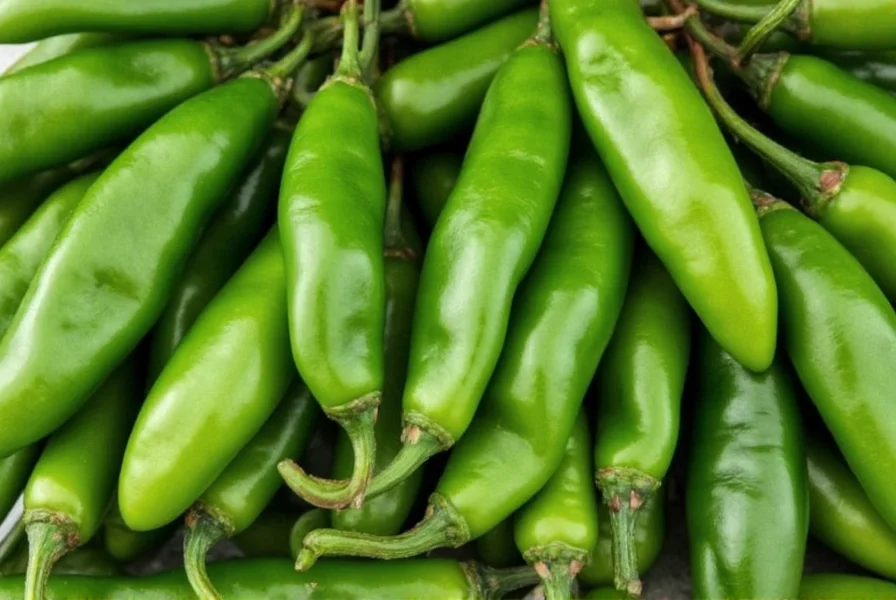
- Best for: Salsas, tacos, roasted dishes
- Flavor profile: Bright, grassy, tangy
- Tip: Roast them for a deeper flavor before chopping or blending
Jalapeño Pepper (Dried Version)
Dried jalapeños (chipotles) range from 2,500–8,000 Scoville, providing smoky depth with mild heat. Perfect for braises and sauces.
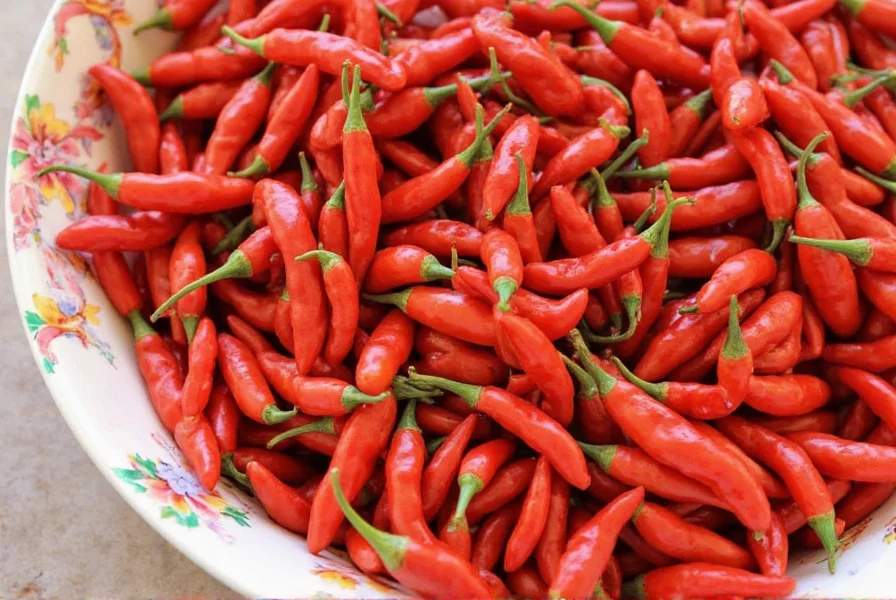
- Best for: Smoked flavors, sauces, braises
- Flavor profile: Smoky, earthy, mild heat
- Pair with garlic or lime to enhance brightness
Guajillo Pepper
Guajillos (2,500–5,000 Scoville) bring fruity tartness and complexity. Soak before blending for sauces like mole.

- Best for: Mole sauces, enchiladas, soups
- Flavor profile: Fruity, tart, leathery
- Soak before use to soften for blending
Pasilla Pepper
Pasillas (1,000–2,500 Scoville) offer deep, earthy richness. Use in combination with hotter chilies for balanced moles.
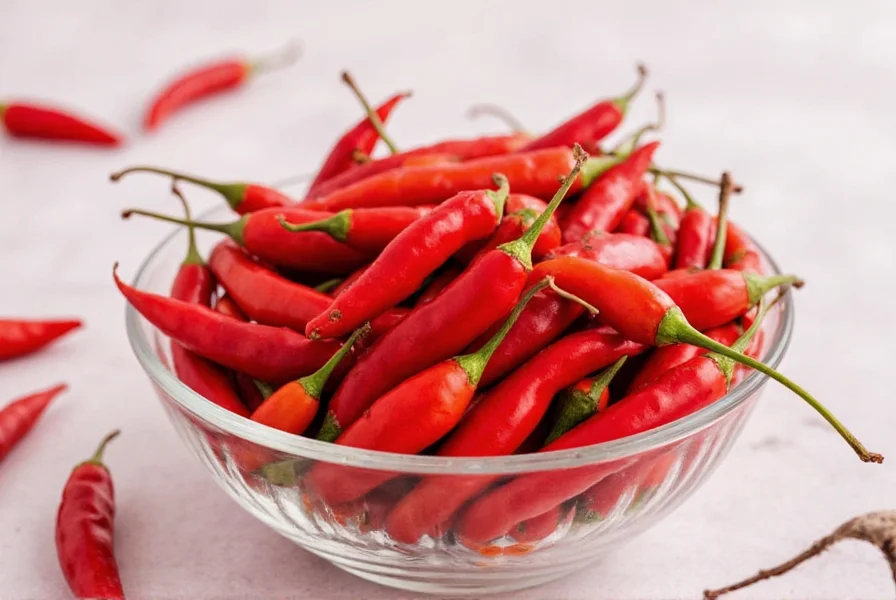
- Best for: Slow-cooked dishes, moles, pastes
- Flavor profile: Earthy, raisiny, chocolate-like
- Use in combination with hotter chilies for balanced heat
| Pepper | Scoville Heat Units | Flavor Profile | Best For | Usage Tips |
|---|---|---|---|---|
| Chili de Árbol | 15,000 – 30,000 | Grassy, citrusy, sharp | Salsas, sauces, marinades | Dried or fresh; grind into powder or use whole |
| Cayenne | 30,000 – 50,000 | Sharp, peppery, clean | Spicy blends, hot sauces | Use sparingly; add smoked paprika for depth |
| Serrano | 10,000 – 23,000 | Grassy, tangy, crisp | Tacos, salads, salsas | Fresh or roasted; adjust liquid content accordingly |
| Dried Jalapeño | 2,500 – 8,000 | Smoky, earthy, mild | Braises, sauces, soups | Rehydrate or blend directly from dried form |
| Guajillo | 2,500 – 5,000 | Fruity, tart, leathery | Moles, soups, stews | Soak before blending; remove seeds for milder taste |
| Pasilla | 1,000 – 2,500 | Earthy, raisiny, deep | Complex sauces, moles | Combine with spicier chilies for balance |
Buying Guide: How to Choose the Right Substitute
Selecting the right chili de árbol substitute depends on heat level, flavor complexity, and recipe needs. Here's what to prioritize:
1. Heat Level Matching
Match Scoville ratings: Cayenne or serrano for maximum heat; guajillo or pasilla for moderate spice. Adjust quantities based on desired intensity.
2. Flavor Complexity
Choose based on desired notes: smoky (dried jalapeño), fruity (guajillo), earthy (pasilla), or sharp (cayenne). Serranos offer bright tang for fresh applications.
3. Form: Fresh vs. Dried
Dried chilies need rehydration for sauces; fresh peppers add crunch to salsas. Use dried for longer shelf life (6-12 months), fresh for immediate use (1-2 weeks refrigerated).
How to Use These Chilies in Cooking
- Roasting: Char serranos or jalapeños over flame for caramelized sweetness.
- Blending: Soak dried chilies 15-20 minutes before blending for smooth sauces.
- Whole vs. Ground: Add whole chilies to stews for infusion (remove before serving); grind for rubs or powders.
Frequently Asked Questions About Chili de Árbol Substitutes
What is the closest substitute for chili de árbol in terms of heat?
Cayenne pepper (30,000-50,000 Scoville) is closest in heat intensity, though slightly hotter. Serrano peppers (10,000-23,000) match the lower end of chili de árbol's range but offer a fresher, grassier profile.
Can I use cayenne pepper instead of chili de árbol?
Yes, but use 50% less cayenne than chili de árbol due to higher heat. Add 1/4 tsp smoked paprika per tsp cayenne to replicate the smoky depth missing in cayenne.
What's the difference between chili de árbol and arbol chili?
No difference—they're the same pepper. "Chili de árbol" is Spanish for "tree chili," while "arbol chili" is the common English shorthand. Both refer to the slender, red Mexican chili with 15,000-30,000 Scoville heat.
How much serrano should I use as a substitute for chili de árbol?
For dried chili de árbol, use a 1:1 ratio by weight for fresh serranos. If substituting dried serranos, use 75% of the chili de árbol quantity since dried peppers concentrate heat. Always adjust to taste.
Are chili de árbol peppers the same as bird's eye chilies?
No. Bird's eye chilies (50,000-100,000 Scoville) are significantly hotter and smaller than chili de árbol (15,000-30,000). Use half the quantity of bird's eye chilies if substituting, and remove seeds to reduce heat.
Can I use fresh peppers instead of dried chili de árbol?
Yes, but fresh peppers contain more moisture. Use 2-3x the amount of fresh serranos or jalapeños compared to dried chili de árbol. For example, replace 1 dried chili de árbol with 2-3 fresh serranos, adjusting seeds for heat control.
How do I store chili de árbol substitutes?
Store dried substitutes (cayenne, guajillo, etc.) in airtight containers away from light for 6-12 months. Keep fresh peppers refrigerated in perforated bags for 1-2 weeks. Freeze fresh peppers individually on a tray before transferring to freezer bags for up to 6 months.
What dishes work best with each substitute?
Cayenne: Dry rubs and hot sauces. Serrano: Fresh salsas and ceviche. Dried jalapeño: Smoky barbecue sauces. Guajillo: Mole and enchilada sauces. Pasilla: Complex stews and chocolate-based dishes. For authentic Mexican recipes, cayenne or serrano provide the closest flavor match.
Conclusion: Heat It Up!
Whether you need fiery heat or nuanced flavor, these substitutes ensure your dish stays authentic. For maximum versatility, keep cayenne and serrano in your pantry—they cover most chili de árbol applications. Remember to balance heat with acidity (lime juice) or sweetness (honey) for perfectly rounded flavors.
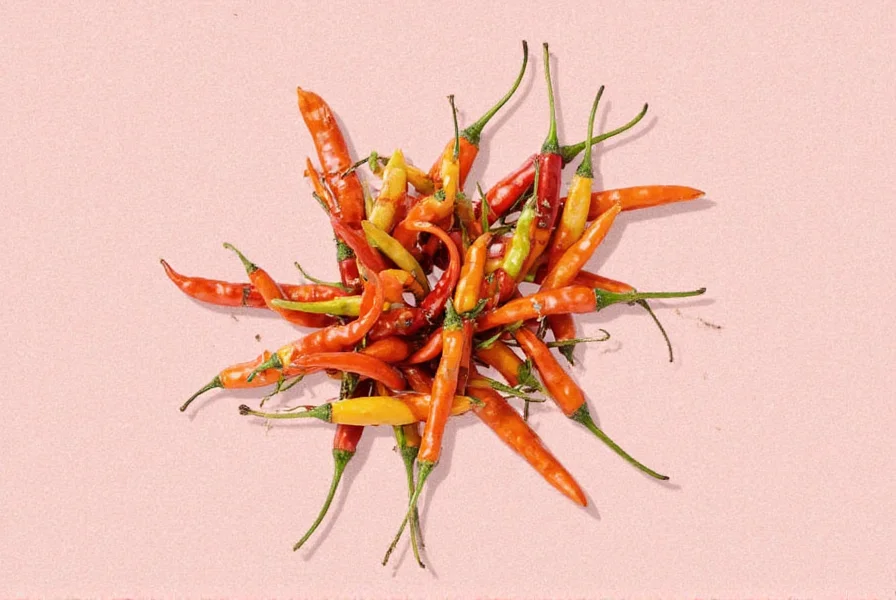

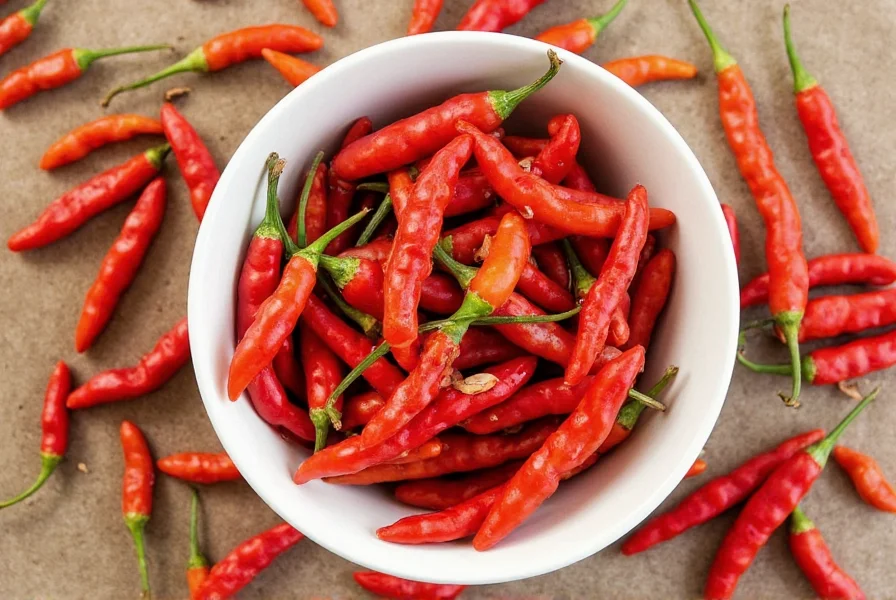









 浙公网安备
33010002000092号
浙公网安备
33010002000092号 浙B2-20120091-4
浙B2-20120091-4